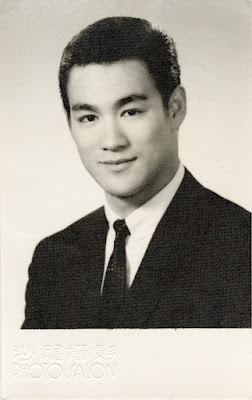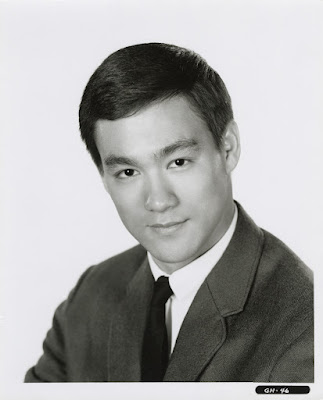Friday, May 31, 2024
PHOTOS FROM THE GREEN HORNET TV SERIES
Thursday, May 23, 2024
THE MR. I.A. MOTO RADIO DISCOVERY
John Marquand’s incarnation of the printed page features a more menacing Japanese than the motion-picture and radio counterpart. In the novels, Mr. Moto is shrewd, tough and ruthless against his enemies, but to most people in most situations he appears to be a harmless eccentric who sometimes calls himself stupid. The main characters in the novels were Westerners (usually Americans) who encounter Mr. Moto in the course of their adventures in exotic lands and gradually come to realize what a formidable character he is.
In the first novel, Thank You, Mr. Moto (1936), an expatriate American gets involved in intrigue in Peking when he tries to save an American woman from unscrupulous art dealers. Moto tries to save them both from a military takeover of Peking. Marquand was labeled by many as the father of the American novel and both wit, style and prose in this novel demonstrate justification. (This is a fantastic novel worth reading, in my opinion.)
In the first five novels, set in the era of expansionist Imperial Japan, Mr. Moto is an agent of the empire. In the final novel, written in 1957, the adventures do not take place in the 1930s but instead are set in the 1950s inside Japan, and Moto is a senior intelligence official in the pro-Western Japanese government. It is assumed he moved his way up in the ranks.
Between 1937 and 1939 eight motion pictures were produced by 20th Century Fox, starring Peter Lorre as Mr. Kentaro Moto. Unlike in the novels, this rendition was a detective with Interpol, who wore glasses (and has no gold teeth), and is a devout Buddhist (and friendly with the Chinese monarchy). He is impeccably dressed in Western suits. His tendency to wear disguises was only flawed by the fact that the audience could easily distinguish the actor playing him. But those are fun films and the studio was justified in creating a series of movies to cash in on further popularity (and profits) from the Charlie Chan films.
Among the discoveries was two radio scripts for the same episode, but with different titles. "The Karaloff Paper" (broadcast on the West Coast, June 13) and "The Bazaloff Paper" (broadcast on the East Coast, June 17). Naturally, websites including Wikipedia have listed the titles of these episodes (and other episodes in the series) with incorrect spelling, which is what makes these radio scripts all the more valuable. Wait... did I say radio scripts?
Thursday, May 16, 2024
THE KING OF THE KONGO (1929 restoration)
Fans of cliffhanger serials know that The King of the Kongo was the first film serial to have any sound element. Larger serial-producing studios (for example, Pathe and Universal Studios) were reluctant to make the upgrade from silent to sound (although Universal released their own Part-Talking serial, Tarzan, the Tiger, later in the same year) while smaller studios could not afford to do so. This was, naturally, two years after the first Part-Talking film, The Jazz Singer (1927), had been released and a year after the first "All-Talking" film, Lights of New York (1928).
Despite an announcement that two versions of this serial would be released, (a "Part Talking" version and a complete silent version (for theatres not yet equipped for sound), no evidence for a silent version being released exists.
The King of the Kongo was not a marvel to behold when it comes to the type of plots commonly found in cliffhanger serials. Independently, the two protagonists, Diana Martin and Secret Servie agent Larry Trent, are searching the jungle for missing relatives, her father and his brother. Tied up in this plot are ivory smugglers and a lost treasure hidden in the jungle. But the highlight of this serial was the fact that it was the first to have sound and the role of the villainous Scarface Macklin was played by Boris Karloff.
 |
| Karloff falls victim to an ape. |
Legend has it that producer and studio owner Nat Levine carried the sound discs in his lap from Los Angeles to New York City, by train and aeroplane, for them to be safely developed. For financial reasons, these discs could not have been repaired or replaced if anything had gone wrong.
Of the 21 sound discs, all but six of them have been recovered. A breakdown of the history: In 2011, collector/historian Eric Grayson, owner of a 16mm silent print, restored the sound to several scenes of the film, using discs from Ron Hutchinson's Vitaphone Project. Ron’s project was to seek out sound discs for those early Vitaphone films that lacked sound. The results of some of the talking scenes were then posted on YouTube.
In 2012, a Kickstarter successfully helped fund a restoration of Chapter 5. A National Film Preservation Foundation grant was issued for Chapter 6 in June of 2014.
In 2019, Grayson initiated a massive search for surviving materials and had an updated restoration scheduled for release in 2024. This includes mostly 35mm footage and a few 16mm inserts plus all of the surviving discs. Among the sources was the Library of Congress, which had some elements – but not all.
As of this week, my copy of the BluRay/DVD combo for pledging money to support the preservation project on Kickstarter, arrived. After watching half of the serial so far, I can clearly say this film has not looked or sounded this well since 1929. It is a full 4K restoration from archival prints and negatives at the Library of Congress, 95% of which is from 35mm. (Prior, collectors like myself could only enjoy the Blackhawk-style 16mm prints.)
This release also includes commentary from a number of film historians and Ed Hulse’s commentary on track two for a number of chapters, is awesome. Ed truly provides a historical perspective of the production. On a personal note, I enjoy cliffhanger serials as much as the next guy but I find the silent serials are much better. Once the studios switched over to sound, and discovered young children were frequenting theaters more often, I found the serials started dumbing down for a juvenile audience. By comparison, Republic in the late forties and early fifties released Canadian Mounties vs. Atomic Invaders and Zombies of the Stratosphere. While those serials have their own flavor and formula, I enjoy the silent serials more. With serials like The King of the Kongo, the serious nature of the jungle drama prevails.
You can buy the serial from other companies but those are the inferior prints. The link below is the only place you can get the restoration and, believe me, you won’t go wrong with this purchase. After you enjoy the 221 minutes of Karloff, dinosaurs, gorillas, lions, cougars, alligators, elephants, and lost jungle temples, take time to enjoy Ed’s commentary.
https://www.drfilm.net/blog/?product=the-king-of-the-kongo-blu-ray-dvd-pre-order

















